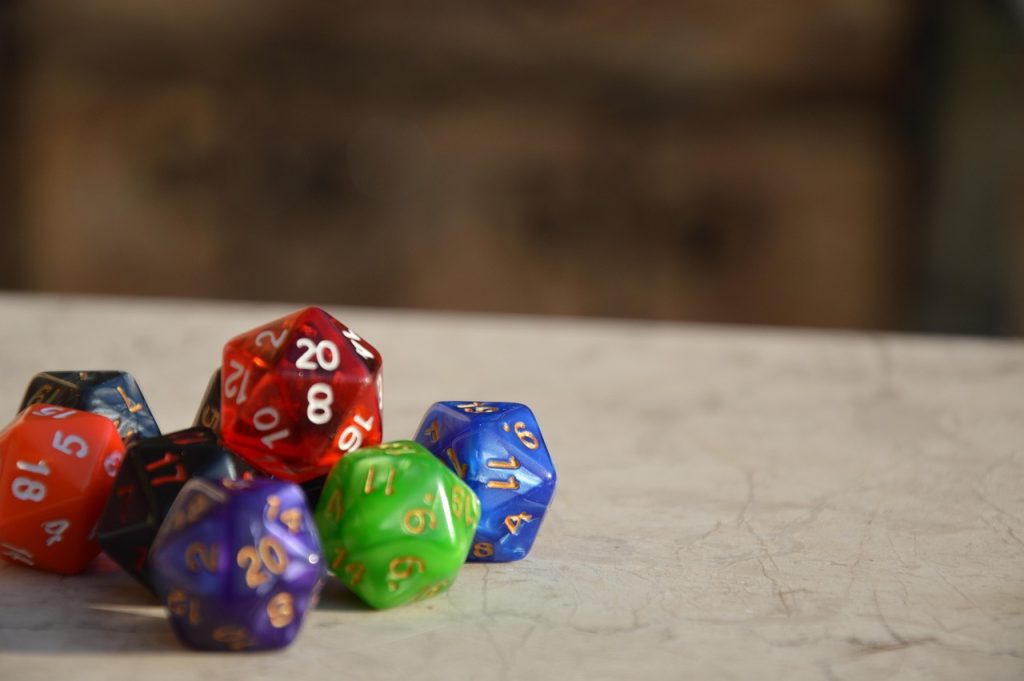So… you want to create a Dungeons and Dragons campaign for the first time. That’s both exciting and a bit intimidating. As the Dungeon Master, you’re responsible for creating a world that feels cohesive, deciding on a story that grabs attention, and guiding players who might be unfamiliar with role-playing games. The goal here is simple: give everyone a clear path into the game, manage expectations, and make the first few sessions smooth enough that players want to come back.
In this article, we’ll cover the essentials you need before game one—tools, setup, and structure—and then walk through how to run a solid Session Zero, stage your first session, and keep the narrative moving at a good pace without overloading anyone. You’ll find practical advice, examples of what to prepare, and straightforward tips for handling the unpredictable moments that inevitably pop up at the table.
Create a Dungeons and Dragons Campaign: Your DM Toolkit
You don’t need an entire shelf of miniatures or a professional soundboard to run a good game or be a great dungeon master. Start with these basics:
- Core Rules
Grab the free D&D Basic Rules PDF from Wizards of the Coast. It covers everything you need: character creation, combat mechanics, most common spells, and a selection of monsters. If you can, pick up a Player’s Handbook. It’s not strictly necessary, but it does expand your options and gives you quick reference material for questions that go beyond the basics. - Character Sheets and Dice
Print some character sheets or set up a shared folder where players can download and print their own. Make sure everyone has a full set of polyhedral dice (d4, d6, d8, d10, d12, d20). Rolling physical dice is part of the experience, but if a player can’t make it in person, free online rollers work well. - Note-Keeping System
Choose a method you actually use. A lined notebook, a Google Doc, or an app like OneNote can hold NPC details, plot notes, and session recaps. Keep it simple. Label each entry with a date and a brief description so you can find it later. - Visual Aids
At minimum, use a grid drawn on plain paper or a cheap dry-erase mat. Tokens can be anything: coins, colored beads, or inexpensive miniatures. When players see who is where, it cuts down on confusion during combat. - Basic Atmosphere
You don’t need a full sound system. A single background track—forest sounds, tavern chatter, or quiet dungeon ambience—played at low volume can help. Similarly, a desk lamp as “torchlight” makes a difference without adding complexity. - Comfort Items
Snacks, water bottles, and a timer for breaks go a long way toward keeping focus. Plan a five-minute break every hour and a half to let everyone stretch or refill drinks.
You can add more tools over time—condition markers, printed maps, or campaign management apps—but these basics will let you run a solid game from session one.

Your D&D Campaign Starts: Session Zero
Session Zero is your chance to make sure everyone is on the same page. Treat it as a guided discussion rather than a formal meeting.
Goals for Session Zero
- Clarify the Setting and Tone
Describe the world in a few sentences: “This campaign is set in a frontier region recovering from war. Magic is common but not overwhelming. Expect a mix of exploration and social interactions.” Ask players what they want to see. If someone hopes for political intrigue and another expects dungeon crawling, find a middle ground or set clear expectations about balance. - Collaborate on World Details
Invite each player to name one local detail: a town landmark, a regional legend, or a minor faction. These contributions aren’t just decoration—they become hooks you can use. - Build Characters Together
Walk through the basics of race, class, and background. Help players choose options that fit their play style while covering a range of roles in the party. If two players pick similar builds, suggest minor tweaks to avoid overlap. Document each character’s goals or motivations in one sentence—this gives you personal threads to connect into the story later. - Agree on House Rules
If you plan to use any non-standard rules—variant flanking, critical hit tables, or relaxed resting rules—explain them now. Provide a written summary so no one forgets. Also discuss any content boundaries. If mature or horror themes might come up, introduce a simple consent tool like the X-Card. A quick line—“If you ever feel uncomfortable, tap the card and we’ll adjust”—sets a respectful tone. - Set Logistics
Choose a regular schedule that works for everyone. Two- to three-hour sessions tend to keep energy up without burning people out. Decide on a location—someone’s living room or a virtual table—and set up a shared calendar or group chat for reminders.
By the end of Session Zero, players should have characters, an idea of the world, and a sense of how the game will run. That clarity makes the first real session more about story and less about logistics.
Planning and Running Your First Session
The first session is where you turn plans into action. Aim for a clear beginning, a focused middle, and a memorable ending.
Structure: Three Acts
- The Hook
Start in the middle of an event. If you begin with a scene at a tavern, opening lines like “The bartender’s door bursts open and two guards stumble in, wounded” create immediate questions to drive the story. Alternatively, place them directly in a small combat encounter. The key is to remove unnecessary exposition and dive into an engaging situation. - The Development
After the initial action, shift to a short exploration or roleplay scene. Give players a chance to ask questions, interact with an NPC, or survey the environment. This break in intensity helps them learn skills like investigation or persuasion in context, rather than through dry explanation. - The Climax
End with a challenge that feels like a payoff. It might be a mini-boss fight, a trapped hallway that’s starting to collapse, or a moral choice where they decide to save a captive or pursue an enemy. Whatever you choose, make sure it ties back to the hook and hints at bigger things to come.
Teaching Dungeons and Dragons as You Go
When a player asks how to do something, guide them through the steps. If they want to climb a wall, explain rolling an Athletics check: roll a d20, add their proficiency (if any), plus their Strength modifier, and compare to a difficulty you set. In combat, remind them of their options: Attack, Cast a Spell, Dash, Dodge, Disengage, or use an item. Keep explanations short and focused on that moment.
Handling Improvisation
Players will surprise you. If someone decides to swing from a chandelier to kick an enemy, reward the creativity. Call for an Acrobatics or Athletics check and narrate the result. If a combat seems too easy, introduce a new complication—an enemy calling for reinforcements or a trap triggered by the fight. If it’s too hard, let an NPC ally intervene or have an enemy break off and flee. The goal is to keep momentum and challenge without frustration.
Wrapping Up
End the session with a clear transition. Give a recap in a few sentences: what they achieved, what they discovered, and where they plan to go next. Ask for quick feedback: “Which part did you enjoy? Was anything unclear?” This helps you adjust for the next session.

Weaving the Narrative: Maintaining Momentum
A campaign needs variety. Alternate between action, investigation, and social interaction so no one feels stuck.
- Combat Encounters
Keep fights short—three to five rounds. That’s enough to challenge the players without wearing them out. Use simple setups: a small patrol of bandits, a pack of wolves, or a single tougher enemy with a couple of minions. - Investigation Scenes
Place clues in plain sight but reward careful observation. A torn piece of cloth, footprints leading off the road, or a coded message on a wall can drive the story forward. Teach players to ask questions: “What’s weird about this room?” or “Who would benefit from these tracks?” - Social Interaction
Let players practice talking to NPCs. Give each important character a clear motive and a distinctive trait. A local merchant might be more clerical than combative, while a temple guard could be skeptical of outsiders. These interactions give characters a chance to shine outside of combat.
Keep an eye on the group’s energy. If attention starts to drift, raise the stakes with a timed challenge or a sudden event—a distant scream, a tremor, or a new NPC arriving with urgent news. When the story pauses for a break, send a one-paragraph recap in your group chat so players remember key points before the next session.
Let’s Recap
Running D&D for new players is about setting clear expectations, teaching rules in context, and keeping the pace engaging. By preparing a lean toolkit, hosting a focused Session Zero, structuring your first session into a hook, development, and climax, and weaving in varied scenes, you’ll give your group a strong start.
Remember, the best stories often come from moments you didn’t plan: an unexpected clever move, a rule you explain on the fly, or a player’s idea that takes the plot in a new direction. Encourage those moments. They’re what make every campaign unique. Roll the dice, tell the story, and let your players’ choices shape the world you create together.


